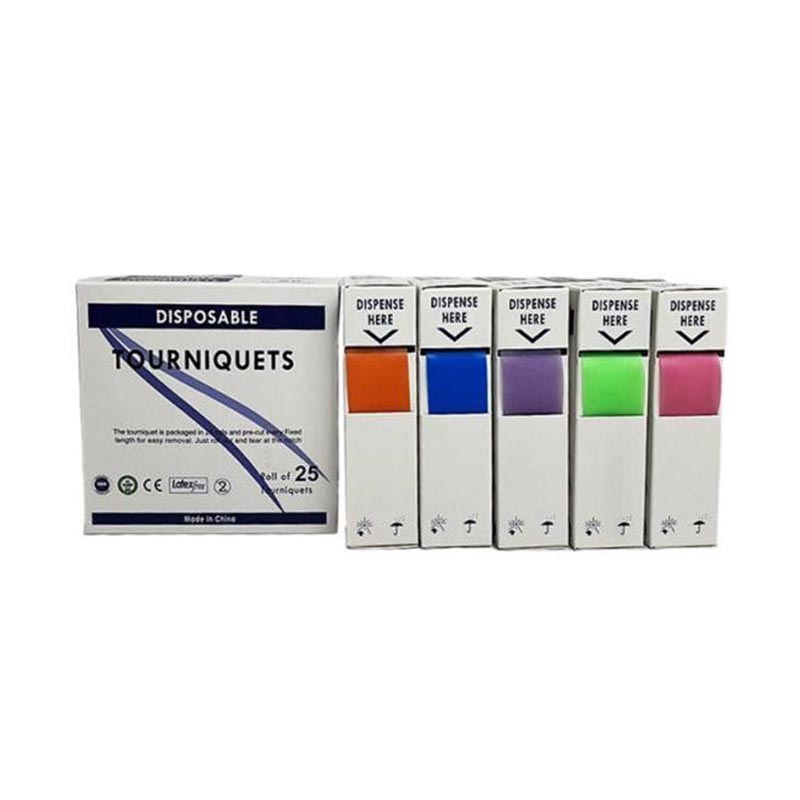Factors to Consider When Buying a Disposable Tourniquet
2025-07-07
Disposable tourniquets are essential medical tools widely used in hospitals, clinics, and emergency settings for procedures such as blood draws, intravenous insertions, or bleeding control. When selecting the right disposable tourniquet, several factors must be considered to ensure effectiveness, patient comfort, hygiene, and overall safety. Making the right choice can improve clinical outcomes and reduce the risk of cross-contamination.
1. Material Quality and Elasticity
One of the most important aspects of a disposable tourniquet is the material it is made from. The material should offer optimal elasticity, allowing healthcare professionals to apply adequate pressure without damaging the skin or blood vessels. Common materials include latex and latex-free synthetic rubber. Latex-free options are preferred in most settings to prevent allergic reactions. The material should also be strong enough to resist tearing under tension.
2. Comfort and Skin Compatibility
Comfort is especially important during procedures like venipuncture. A good disposable tourniquet should have a soft texture that doesn’t cause discomfort or leave marks on the skin. It should also be non-irritating, hypoallergenic, and free from harmful chemicals or dyes, particularly for use on sensitive skin or pediatric patients.
3. Width and Length
The size of the tourniquet affects its usability. Wider tourniquets distribute pressure more evenly and reduce discomfort, making them ideal for longer procedures. The length should be sufficient to accommodate a range of arm sizes while allowing easy tying or fastening. A standard length is typically suitable for adults, while smaller sizes may be needed for children.
4. Sterility and Hygiene
As disposable tourniquets are often used in sterile environments or for patients with compromised immune systems, maintaining hygiene is critical. Each tourniquet should be individually packaged to ensure cleanliness and minimize the risk of contamination. Using a new, sterile tourniquet for each patient helps prevent cross-infection, aligning with infection control protocols.

5. Ease of Use
Time is often critical in clinical or emergency situations. A disposable tourniquet should be easy to apply and remove quickly, even with one hand if needed. Designs that allow for quick release or easy knotting can save valuable time and improve the efficiency of care delivery.
6. Cost and Supply Chain Reliability
While disposable tourniquets are relatively inexpensive, the cost can add up in high-use environments. It is important to choose a supplier that offers competitive pricing without compromising quality. Additionally, a reliable supply chain ensures that healthcare facilities can maintain sufficient inventory to meet patient demand.
7. Environmental Considerations
With increasing awareness of medical waste, some facilities may consider the environmental impact of disposable tourniquets. Options made from biodegradable or recyclable materials are available and can support more sustainable healthcare practices.
Conclusion
Choosing the right disposable tourniquet involves more than just selecting a basic medical supply. By considering factors such as material quality, comfort, hygiene, ease of use, and environmental impact, healthcare providers can ensure better patient care and procedural efficiency. A well-selected disposable tourniquet supports both safety and performance in any medical setting.
As a professional manufacturer and supplier, we provide high-quality products. If you are interested in our products or have any questions, please feel free to contact us.